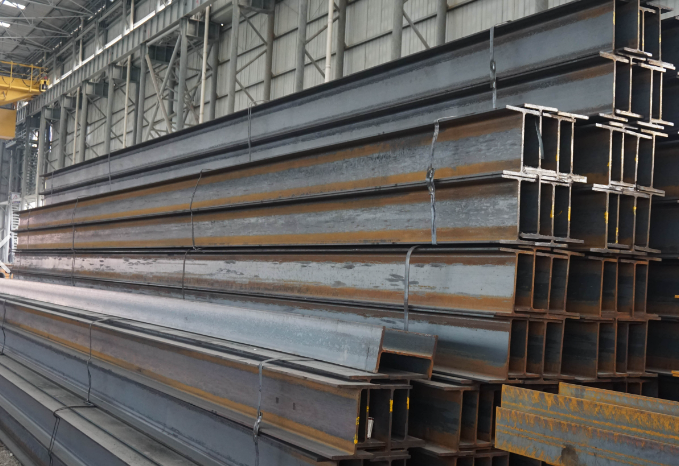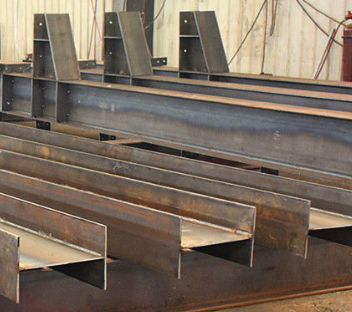An H-beam, also known as an H-shaped steel or wide flange beam, is a structural steel profile characterized by its distinctive "H" cross-sectional shape. It consists of two horizontal flanges (top and bottom) connected by a vertical web, forming a highly efficient load-bearing structure. H-beams are widely used in construction and engineering due to their excellent strength-to-weight ratio and versatility.
Cross-Sectional Design:
The web (central vertical section) resists shear forces, while the flanges (horizontal sections) withstand bending moments.
The symmetrical H-shape provides uniform strength in multiple directions.
Material:
Typically made of rolled steel, with common grades including ASTM A36, S235, S355, or high-strength low-alloy (HSLA) steel.
Advantages:
High Load Capacity: Ideal for supporting heavy loads in beams, columns, and frameworks.
Lightweight: Offers greater strength with less material compared to solid sections.
Ease of Fabrication: Can be welded, bolted, or cut to fit specific project requirements.
Economic Efficiency: Reduces construction time and material costs.

Manufacturing Methods:
Hot-Rolled: Produced by heating steel billets and shaping them through rollers.
Welded: Fabricated by welding steel plates for customized dimensions.
Construction: Building frames, bridges, and industrial structures.
Infrastructure: Support columns, roof trusses, and crane rails.
Recyclability: Steel H-beams are 100% recyclable, reducing environmental impact.
High-Strength Steel: Grades like S460 or ASTM A913 allow lighter, stronger designs.
Hybrid Beams: Combining steel H-beams with composite materials (e.g., concrete-filled tubes).
Digital Fabrication: BIM (Building Information Modeling) and CNC machines optimize cutting/welding precision.
CREDIT

Fire Resistance: Intumescent coatings or concrete encasement for fire-rated structures.
Connection Design: Bolted vs. welded joints; moment connections vs. shear connections.
Used hybrid steel-concrete H-beams for the world’s tallest bridge piers.
Optimized for wind resistance and minimal material usage.
Corrosion: Requires protective coatings in humid or marine environments.
Weight: Despite efficiency, large H-beams need cranes for installation.
Cost: Custom sizes (welded beams) are more expensive than standard rolled sections.
